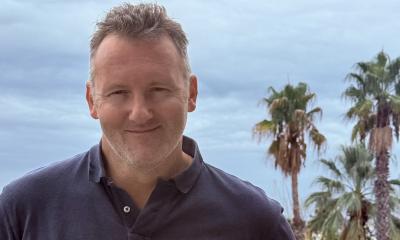The World of Radiology - ECR 2010 opened its doors!
by Michael Krassnitzer
The European Congress of Radiology (ECR), the annual meeting of the European Society of Radiology (ESR), has started. We accpeted 505 lectures and 880 scientific papers from an all-time high of 5.657 submitted abstracts. It would not be fair to single out some individual topics, as Professor Christian J. Herold, ESR President and Chairman of the Department of Radiology at the Medical University Vienna said in a press conference at the opening of the Congress on Thursday, 4 March. Nevertheless, the Austrian radiologist underlined two issues that he considered particularly important in today’s radiology: e-health and neuroradiology.

Teleradiology, being a core aspect of e-health, has become a reality in most European countries, but the absence of homogenuous legislation raises both legal and medical concerns, as Professor Lluís Donoso-Bach, director of the Diagnostic Imaging Department of the Hospital Clínic Barcelona, Professional Organisation Committee chairman and member of the ESR Executive Council pointed out.
Accreditation is a major isse. For instance, if a doctor based in Belgium provides services for an institution in the UK, he or she must obtain proper accreditation. The local radiologist and the teleradiologist have to come to an agreement. Regulation of telemedicine and teleradiology should be the responsibility of the country where the patient undergoes the imaging procedure. Likewise, if a patient in the UK receives services from Belgium, he or she should be informed about it. An expert panel will discuss this issue on Saturday during the dedicated ECR session “e-health: Legal and technical challenges for radiology”.
Professor Franz Fazekas, head of the Department of Neurology and director of the Division of General Neurology at the Medical University Graz (Austria), highlighted the significance of imaging in stroke diagnostics and therapy. According to Professor Fazekas, ischaemic and haemorrhagic stroke require very different therapeutic strategies, and diagnostic imaging can help identify the two kinds of stroke. The information acquired during radiological examinations has paved the way for the increasingly specific therapeutic interventions that have become available in recent years. “While time is still the main limiting factor for successful thrombolysis of an occluded vessel, the combination of diffusion-weighted and perfusion-weighted imaging, i.e. delineation of salvageable brain tissue, helps to identify those patients who could profit from thrombolysis even after 4 to5 hours”, he said. Radiologists and neurologists will discuss this topic during the 'ESR meets Neurologists' session on Friday at ECR.
ESR President Professor Herold used the opportunity to highlight the latest activities of the European Society of Radiology: “This year has seen some very notable developments for the ESR, with significant headway being made with many of our more important challenges.”
The establishment of the ESR EU Task Force last year has pushed the ESR to the forefront of issues that directly concern radiology, as Professor Herold explained. The Alliance for MRI in particular, a group largely driven by the ESR and patient groups, has sharpened its profile with the relevant EU bodies. The Alliance aims to achieve an EU-wide exemption for medical use of MRI and related research from any exposure limit values set in the Physical Agents 2004/40/EC (EMF) Directive and the implementation of user guidelines. A revised draft of the Directive is expected to be available from the European Commission in early summer of 2010, and the Alliance also launched an online petition to mobilise support for the cause, which currently bears over 4.000 signatories. “There is a lot of work ahead in our campaign, as the lack of understanding regarding the implications of the EMF Directive on the use of MRI to treat and diagnose diseases today and in the future is still widespread throughout the member states. We need the support of the national radiological societies and the patient groups at member state level”, Prof.essor Herold said.
Recruiting new radiologists in Europe is also high on the agenda. “The field of radiology has expanded to such an extent that qualified radiologists will become a rare and much wanted species in the future. The ESR has set up an action plan to invest in medical students and attract young people to the radiology profession”, Professor Herold stated. The harmonisation of training curricula in Europe is another key priority of the ESR. “Why should somebody trained in Finland undergo a different training programme than his or her colleague in Spain? In the interest of our patients we have to ensure the highest possible level of training and standards throughout Europe”, Professor Herold asked.
The European Congress in Vienna – with 18.000 participants from approximately 100 countries and 305 exhibitors from 58 nations – will end on Monday, 8 March.
Pictures: © ESR – European Society of Radiology / Harry Schiffer
04.03.2010











